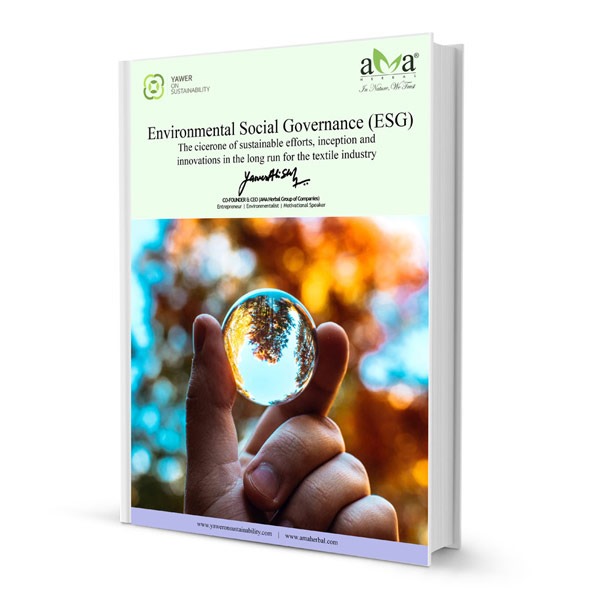No one can see the future, but the actions made in the present can play a decisive role in giving a sustainable direction to it. Business entities are becoming aware of sustainability in their business operations.
Whether it is enough to create some Sustainable Development Goals (SDGs) or if it requires support with proper monitoring within the organizations.
It is an unseen combat between rapid growth and a sustainable path, larger economic gains, and sustainable supply chains. No one else can control what you want to do. Similarly, when it is the matter of preferring sustainability over materialistic gains… The last choice is yours.
What is the need for Environmental Social Governance (ESG) when we already have 17 Sustainable Development Goals (SDGs)?
The need for more brought Environmental Social Governance (ESG) into existence. 17 SDGs were introduced to end poverty and create sustainable business opportunities with a vision to reduce carbon footprints and save planet Earth. So SDG’s prime focus is economic growth and social inclusion by generating sustainable employment opportunities and ecological sustainability. These goals also focus on zero hunger, gender equality, and improving climate, health, and education.
ESG refers to Environmental, Social, and Governance. This term is often used in finance and business to refer company’s business in 3 key factors-
Environmental Impact
Behavioural policies with investors and employees
Governance practices overall
In simple words, ESG is a cluster of principles, embraced by businesses to promote a sustainable approach in the long run. ESG-focused business operations help monitor & measure their KPIs related to sustainability.
ESG has become a significant tool to combat climate change because it increases accountability and transparency in sustainable business operations.
How can we differentiate between ESG and SDGs?
| Particulars | Sustainable Development Goals (SDGs) | Environmental Social Governance (ESG) |
Credentials | These are 17 global goals formed by the United Nations | It is a rating system utilized by businesses to measure their social & environmental credentials |
| Duration | They are time-bound as they have to be achieved by the year 2030 | It focuses on long-term solutions |
| Focus | They focus on specific sustainable targets around the globe | It focuses more deeply on sustainable business governance |
Connection of ESG with natural dyes
The adoption of sustainable dyes aligns with circular economy principles, leading to energy and water savings. Sustainable innovation & dyeing practices, consumer awareness, and the integration of Life Cycle Assessment (LCA) are essential for boosting sustainable dye adoption and enabling circular economy principles.
Natural dyes’ raw material collection, extraction, and supply align with the Environmental, Social, and Governance (ESG) factors. It also encompasses environmental, social, and governance considerations throughout the supply chain.
The target of ESG is to encourage businesses to boost their social and environmental credentials along with attracting more investment. Here, the word ‘investment’ is not just limited to stakeholders but also includes employers, suppliers, customers, and the communities they are associated with.
A company’s performance shouldn’t only be measured by its dominant financial performance but also how it serves the planet, people, and society.
What is the DNA of AMA Herbal for the compliance of ESG?
Sustainability is inherent in AMA Herbal’s DNA. AMA Herbal has revolutionized Textile Dyeing by elevating Global Green Standards with Indigenous Methods. Here is a glimpse of it-
- Proprietary methodology Reduces Carbon Emissions by 5.69 kg per 10 kg of Cotton Dyeing
- AMA Herbal’s Natural Dyeing Methodology ensures Greener Earth, Brighter Colors and Longer-lasting Fabrics
- Indigenous Dyeing Technique ensures that style meets sustainability by reducing carbon emissions
AMA Herbal has unveiled a unique indigenous method for dyeing textiles (patent under process) with natural colourants.
This sustainable dyeing process can transform the fashion landscape globally, presenting an environmentally conscious alternative to synthetic dyeing practices.
The luminance of sustainable methodologies at AMA Herbal is more than its ecological impact. It is also brightening the lives collecting raw materials for making natural dyes.
By curbing energy consumption by up to 87,990 KJ and reducing carbon dioxide emissions by 5.69 kg per 10 kg of cotton dyeing, the company is setting a new standard for environmentally conscious practices.
ESG can bring more benefits above completing the recognized standards and AMA Herbal is well aware of it.
We understand the ‘baseline’ of our sustainability, and the measures we should take for their expansion and sustainable betterment.
Let us know how-
It is a world-known fact that if you want to stay at the top, then you have to be innovative as per the changing requirements of customers along with matching steps with the changing climatic and technological working scenario.
However, people usually don’t understand the significance of innovation and how innovations happen.
AMA Herbal redefining sustainable innovations and their bond with ESG
𝐀𝐭 𝐀𝐌𝐀 𝐇𝐞𝐫𝐛𝐚𝐥, 𝐨𝐮𝐫 𝐢𝐧𝐧𝐨𝐯𝐚𝐭𝐢𝐨𝐧𝐬 𝐡𝐚𝐯𝐞 𝐭𝐡𝐫𝐞𝐞 𝐝𝐢𝐟𝐟𝐞𝐫𝐞𝐧𝐭 𝐜𝐚𝐭𝐞𝐠𝐨𝐫𝐢𝐞𝐬:
The first one is customer-driven innovation where customers mention their likes and dislikes about the product and we innovate the product accordingly.
We make modifications for our customers in our in-house R&D.
This is the fastest-accepted innovation because it is customer-driven, and this is the innovation we need to do all the time.
We have received DSIR recognition from the government for our in-house R&D. An in-house R&D is a must for customer-driven innovations on a day-to-day basis. If they don’t have it, then they won’t be able to meet customers’ requirements.
The second innovation is the Industry Insight. The Textile Industry knows synthetic dyeing options are denting the environment and social harmony. Amidst the race to become bigger at any cost, AMA Herbal has brought innovations that can shift the momentum in favour of sustainability.
Through natural dyes, we may pitch sustainability to the textile industry. We show the LCA studies of our dyes, and how they reduce carbon footprints, energy requirements, waste generation etc.
Operating at room temperature reduces the energy needed for dyeing processes. We transformed the conventional dyeing process through natural dyes from 3-4 days to 5-6 hours.
It was done to make the process more economical for the customers. We elaborate on how our product can be a game changer for them.
We establish our products ourselves. Recently, the EU has come up with a new regulation where they have to put Carbon Credit ratings on the labels of the product and AMA Herbal is extensively working on it, so that we may provide carbon ratings on the labels.
It will help our customers as an insight into the industry they are looking for. This is because they don’t know how to achieve it.
The third one is disruptive innovation. It has not happened before. These innovations are patented and disrupted technologies through new ideologies.
Three disruptive technologies that I can share do not belong to the textile industry.
During the initial days of data storage, floppies were for storage. It was a good storage option at that time with a few drawbacks like viruses, physical degradation, rusting etc.
Therefore, later the Compact Disc (CD) replaced it gradually and then completely. But the desire always wants more space in a compact form. So people were looking for a more spacious storage option in a more compact physical form. This is how the pen drives came into existence. Today, some of the pen drives have a storage of more than 1TB which is more than the total hard disc storage of the olden days.
At AMA Herbal, we have been doing it for so many years.
Our Bio Indigo has revolutionized conventional denim dyeing practices through its sustainable processes. Room Temperature Dyeing is also an innovation and the patented technology of AMA Herbal. Bio Auxiliaries and Vegetal Bio Colour are also a glimpse of our innovative and sustainable methodologies.

